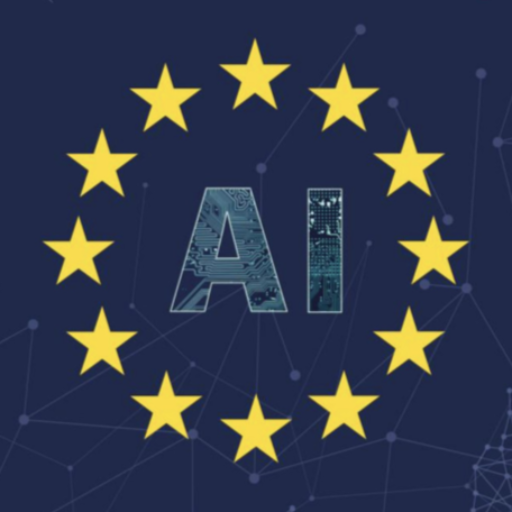AI EU Act - Use Case Check-AI compliance check for EU Act
AI-powered tool for EU AI Act compliance
I would like to deploy a use case to track credit score of customers for a banking institution. Is this a prohibited use case?
What are the steps to deploy a High-Risk AI use case in production?
Can I use Real-Time biometric data to train a Large Language Model and deploy it in Spain?
Related Tools
Load More
EU Law GPT
Expert in EU legal analysis, detail-oriented responses

European Union Law
Expert on EU regulations and directives, offering detailed, formal guidance.
The AI Act GPT
Discover the EU AI Act: A User-Friendly Guide for Effortless Understanding.

EU AI Act Insight
🇪🇺 Specialist in the EU Artificial Intelligence Act. ℹ️ Use any language. Ask "?" or "Help" for relevant questions. Full version of the agreement is here: https://www.kapler.cz/ai-act-dohoda/

AI Act
AI Consultant on the EU AI Act and AI Regulation

AI Use Case Identifier
Identify high-value, feasible and trustworthy use cases for any company. Understand the AI sensibility around each of your core activities, sub-tasks, and get a list of the most relevant AI use cases.
20.0 / 5 (200 votes)
Introduction to AI EU Act - Use Case Check
The AI EU Act - Use Case Check is designed to help evaluate the compliance of artificial intelligence (AI) systems with the proposed EU Artificial Intelligence Act. It assists in determining if a given use case or AI system falls within the scope of the regulation, whether it is classified as high-risk, prohibited, or subject to specific regulatory obligations. The tool’s purpose is to ensure businesses, developers, and institutions using AI adhere to ethical standards and legal requirements while leveraging AI in Europe. For instance, it could evaluate whether a facial recognition system used in public spaces by law enforcement is categorized as high-risk or prohibited under the regulation. The system would then outline the necessary steps for compliance or indicate if the use case should be avoided.

Main Functions of AI EU Act - Use Case Check
Determining if a system qualifies as an AI system under the EU AI Act
Example
A company developing a chatbot for customer service asks whether it qualifies as an AI system. Based on the system's use of natural language processing, it is classified as AI.
Scenario
This function is used when AI developers need clarity on whether their software falls under the definition of AI under the EU regulation, which is based on capabilities such as prediction and autonomous decision-making.
Evaluating use case risks and classification
Example
A healthcare provider using AI to diagnose medical conditions consults the system to check if this AI tool is categorized as high-risk due to its potential impact on human health.
Scenario
Healthcare, financial, and biometric systems often require evaluation to determine if they pose significant risks to fundamental rights, requiring stricter compliance measures like transparency, human oversight, and risk management.
Providing regulatory requirements and guidelines
Example
A bank looking to deploy AI for credit scoring checks what transparency and non-discrimination rules it must follow under the EU AI Act.
Scenario
Organizations in regulated sectors, such as finance, use this function to understand and comply with specific requirements like data quality, documentation, and human oversight in AI system deployment.
Ideal Users of AI EU Act - Use Case Check
AI Developers and Businesses
Companies developing AI products and services, such as AI startups, established tech firms, or businesses integrating AI in operations, can use this service to ensure compliance with the evolving regulatory landscape in Europe. By adhering to the AI Act, they avoid penalties and ensure ethical AI practices, especially when deploying high-risk AI systems.
Legal and Compliance Teams
Legal professionals, compliance officers, and regulatory advisors working in sectors like finance, healthcare, and law enforcement would benefit from using the AI EU Act - Use Case Check to assess the legality of AI systems and ensure their organizations' compliance with the EU AI Act. They are responsible for navigating the complex regulatory requirements tied to AI risk classification and obligations.

How to Use AI EU Act - Use Case Check
Visit aichatonline.org for a free trial without login, also no need for ChatGPT Plus.
Navigate to the official platform and explore the tool without needing to create an account. You can immediately start evaluating AI use cases against the EU AI Act requirements.
Identify your AI system or use case.
Determine whether the AI system in question is being used or developed for purposes that may fall under the regulations outlined in the EU AI Act.
Check for risk category compliance.
Classify the AI system to see if it fits into high-risk, low-risk, or prohibited categories as per the Act's definitions and requirements.
Review compliance obligations.
Once the risk category is identified, use the tool to find the compliance obligations for that category, including technical and transparency requirements.
Ensure documentation and mitigation.
The final step involves gathering the necessary documentation for compliance and reviewing steps to mitigate any potential risks to ensure the system adheres to EU AI regulations.
Try other advanced and practical GPTs
Firm Internal Content Writer Engine (main)
AI-powered content creation and SEO tool.

WDF*IDF Master
AI-powered content optimization for better rankings.

Lexideck Vision Multi-Agent Image Scanner
AI-Powered Image Insights

Free SEO Keyword Research & SERP Analyzer GPT
AI-powered SEO keyword analysis tool

AI Song Lyrics Generator
AI-powered lyric writing, made simple.

Email AI GPT: MixerBox ChatEmail
AI-Powered Email Management Made Easy.

Prompt Master
Empower Your Prompts with AI

Paraphrase Master
AI-powered paraphrasing for precise, natural text.

Super Recruiter
AI-powered recruitment, simplified.

Spreadsheet Maker: Excel, CSV, Spreadsheet
AI-Powered Spreadsheet Creation Tool

Conceptuality
AI-powered creativity for your brand

Linguo
AI-powered tool for clear, accurate writing

- Documentation
- Risk Assessment
- AI Compliance
- High-Risk AI
- Prohibited AI
AI EU Act - Use Case Check: FAQs
What is the primary purpose of AI EU Act - Use Case Check?
The tool helps users evaluate whether their AI systems comply with the EU Artificial Intelligence Act. It assists in categorizing AI systems by risk level and provides guidance on necessary compliance steps.
Can the tool identify prohibited AI practices?
Yes, the tool identifies prohibited practices under the EU AI Act, such as manipulative or exploitative AI systems, and warns users if their AI systems fall under these categories.
Does this tool help with documentation for compliance?
Yes, it provides guidance on the required documentation and procedural steps needed to meet compliance standards for high-risk AI systems, including transparency and data governance.
How does the tool classify AI risk categories?
The tool uses criteria from the EU AI Act to categorize AI systems into high-risk, low-risk, or minimal-risk based on their application and potential impact on fundamental rights and safety.
Is this tool suitable for non-high-risk AI systems?
Yes, it also supports non-high-risk AI systems by offering voluntary guidelines on codes of conduct to enhance trustworthiness and compliance with ethical AI practices.